Italy is a land of remarkable historical significance and unparalleled beauty. We grow up learning about the power and legacy of the Roman Empire. We marvel at the uniqueness of Venice and the natural beauty of Tuscany. We trace the beginnings of our modern age to the Italian Renaissance, and we define art by the brilliance of Michelangelo and Leonardo da Vinci.
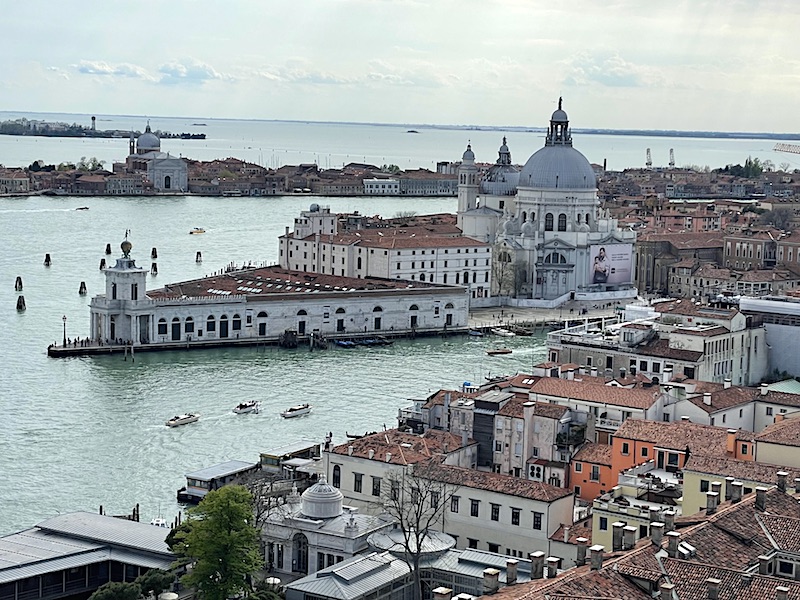
Venice
Rediscovering to Italy
It is no wonder that multitudes of tourists flock there to see sites and enjoy experiences that have become fixed in our understanding of the world and our appreciation of art. Recently, I was excited to revisit Italy especially since I was traveling with three first-timers, my wife and two friends.
Even though my previous visit to the peninsula was as a teenager, the impressions and remembrances of my experience left a strong imprint on me that I have carried my entire life. Images of famous places such as the Coliseum, the Roman Forum, the Sistine Chapel, Michelangelo’s David, the canals of Venice, Pompeii, and the Learning Tower of Pisa were embedded in my remembrance of the country along with many memorable Italian foods. After first visiting Italy in 1975, I returned to many of the same places I toured before and some new places I was longing to see.

Pompeii
Soon after our arrival, I realized that experiencing Italy today is much different than what I remembered. Italy, like much of Europe, has become overrun with intense crowds of people seeking the fantasy of Italy. In reality, it was very difficult to even take a photograph that did not include more people than attraction.
My recent visit took place in spring. One guide told us we were fortunate that we were there before the summer crowds. It was hard for me to imagine that more tourists could fit into this tiny country. During our visit, I often felt like I was in a theme park dedicated to classical, medieval, renaissance, and baroque history. I soon began to think to myself, “Was it worth it to travel so far to see such stereotypical images of Italy?” Realistically, there are many places in the United States where I can go to see either real size or scaled recreations of these famous places. Even the food scene in Italy seemed less exciting than on my previous visit.
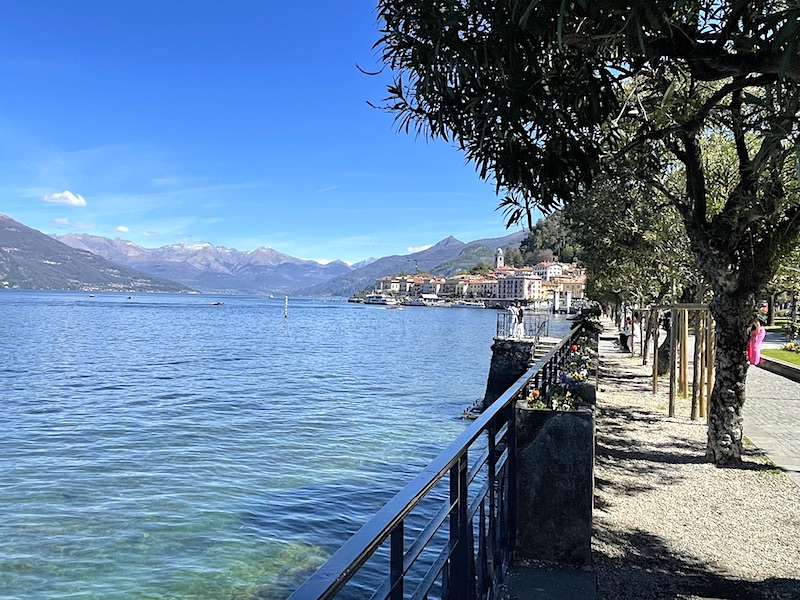
Lake Como
Our itinerary included many classic Italian sites and activities as well as a few that were uniquely special to me. We planned a comprehensive journey that took us from Lake Como in the north to Naples and the Amalfi coast south of Rome. The crowds and sheer volume of people were off-putting, but eventually, as we maneuvered from town to town, we discovered ways to appreciate the beauty and uniqueness of Italy while minimizing the impact of the crowds of people. Along the way, I re-discovered many of the things I loved about Italy. Below are some reflections, observations, and travel tips that I hope will help you to enjoy and appreciate Italy in your own way.
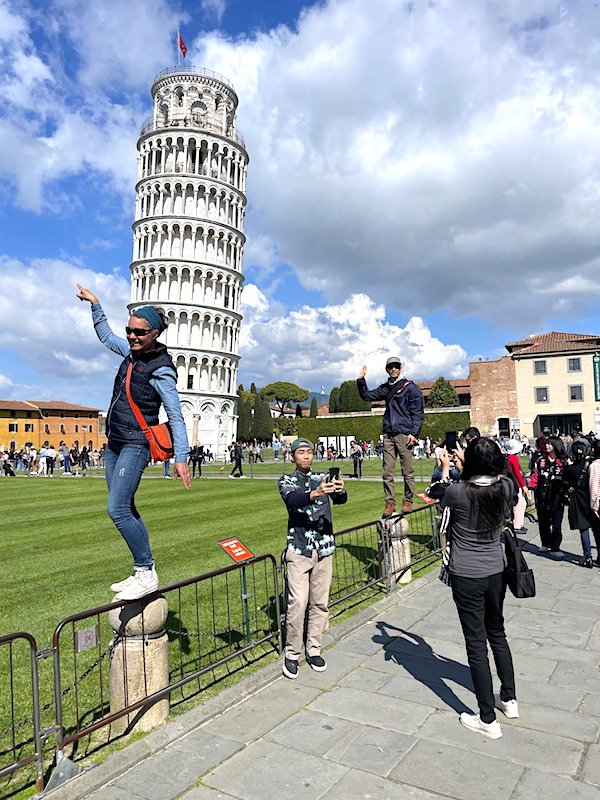
Leaning Tower of Pisa
Italy Itinerary – Trying To See It All
Admittedly, we were trying to see a lot of Italy in two weeks. In each Italian city there are several famous must-see tourist sites that everyone attempts to visit: St. Mark’s Square in Venice, Michelangelo’s David in Florence, the Sistine Chapel in the Vatican, The Colosseum in Rome, the Leaning Tower of Pisa, the ruins of Pompeii, and many more. Major cities in Italy are experiencing high numbers of tourists due to multi-city tours and an increasing number of day trips from cruise ship passengers.

Colosseum in Rome
The competition to see famous Italian sites is intense. Even secondary cities have become overrun due to the demand. The days of finding a quiet hilltop town in Tuscany or a beach getaway along the Mediterranean have disappeared due to social media influencers and cruise ship excursions. Tour companies have even begun to include notices in their itineraries that they may substitute experiences due to a lack of ticket availability. As an example, some major tour companies are warning that they may substitute an enhanced tour of the Roman Forum to include the Palatine Hill when tickets for the Colosseum are unavailable. I’m sure that many visitors would be extremely disappointed to go to Rome and not be able to go inside the Colosseum.
Like so many areas around the world, major tourist sites in Italy require a digital timed ticket admission that can be purchased in advance. Unfortunately, many of these tickets are bulk purchased by ticket brokers who then offer them as “Skip The Line” tickets for double the cost of regular admission. Just showing up to get into an attraction has become difficult and usually requires standing in a long standby line to gain admission.
In many cases, it is not possible to see an attraction by simply showing up and standing in line. Even if you have a “Pre-booked” or purchased a “Skip The Line” ticket, you may still find yourself waiting in line for a while to get in. Pre-planning is necessary when visiting Italy and pre-booking a few days ahead of time for many places may not be enough. Think more like weeks or months. This is just the reality, and the likelihood of spontaneously being able to get into a famous building or attraction is quickly becoming a fantasy. We found that it was best to choose one or two big attractions, book tickets, and then build our itineraries around these anchored times and experiences. We also found that it was worth the extra money to book experienced guides who were often able to facilitate getting into places. In the end, extra money opened up doors and experiences.
Our overall strategy was to plan ahead of time and be selective about the art and architecture we visited. I read historical novels, watch documentaries, and continually listen to history podcasts. For me, everything about history and art is interesting, but that was not necessarily true for the people I was traveling with. They enjoy learning about history, but they equally enjoy cultural experiences. I opted to balance each day with multiple experiences, art, history, photo opportunities, good food choices, and exercise. This proved to be a good formula.
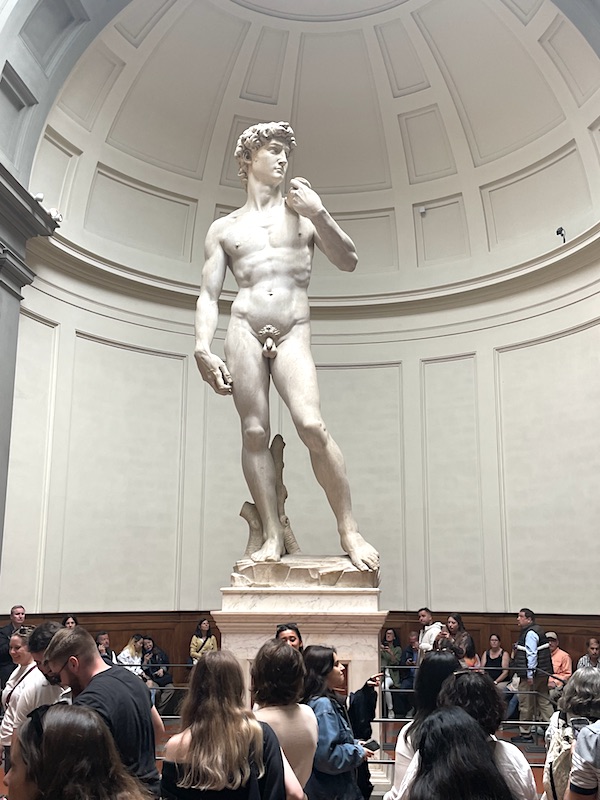
Michelangelo’s David at the Accademia Gallery of Florence
As an example, we had limited time in Florence. Many people try to schedule both the Academia Gallery Museum to see Michelangelo’s David and the Uffizi Gallery in one day. I knew this would be too much, so I opted to schedule a guided walking tour of the historic area, lunch at a new local food court in the Mercato Centrale marketplace, a visit to the Academia, and a walk to the Piazzale Michelangelo by way of the Ponte Vecchio. It was a perfect day. The Uffizi Gallery would have been too much and will have to wait for a return visit sometime in the future.
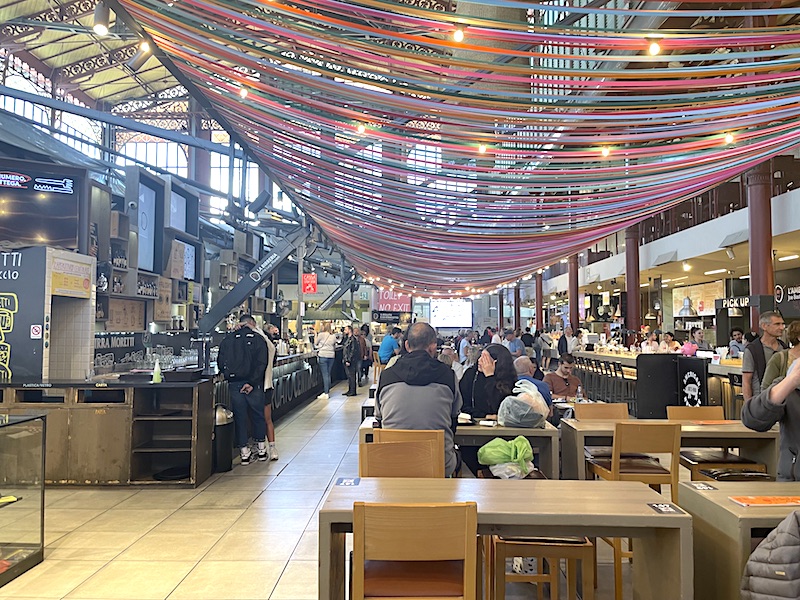
Mercato Centrale marketplace Florence
Italian Art and Architecture
Most people attempt to visit the major basilicas in every Italian town such as Saint Francis in Assisi, St. Peters in Rome, St. Marks in Venice, and the Duomo in Florence. They are four of the most famous holy sites in Italy, but the list of available churches is almost endless. It is easy to focus on the main cathedrals found in most Italian towns, but “cathedral fatigue” is a real thing and can set in quickly.
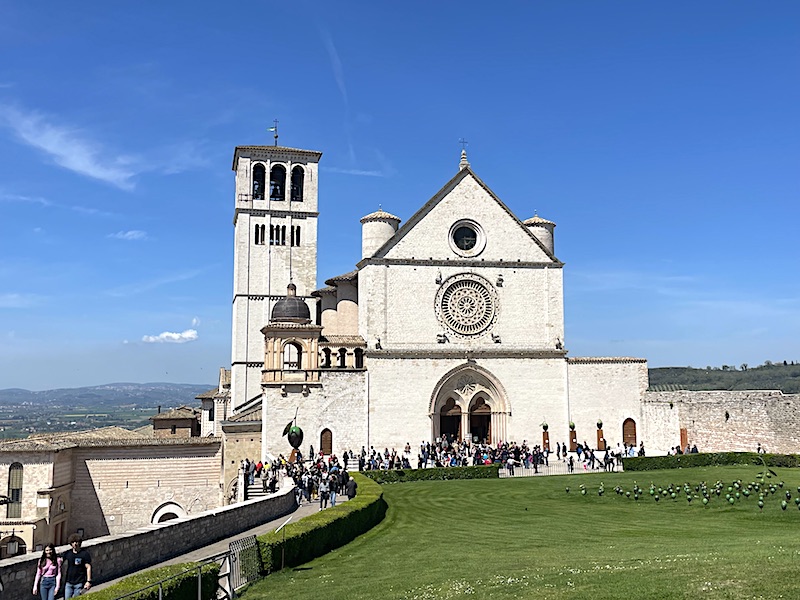
Basilica of Saint Francis of Assisi
We made an effort to identify specific artworks and architectural features in churches throughout Italy. We also limited ourselves in each town so we did not grow tired of viewing religious art. This meant that we mainly viewed some structures from the outside and selectively went inside others. It was very tempting to want to see it all while in Italy, but it is also okay to permit yourself to leave some things for the next journey.
I enjoyed hearing local guides talk about the different architectural styles of different structures in the cities of Italy. Many cathedrals feature a variety of styles since they were built over long periods during which architectural influences changed. Many buildings were also refurbished due to age and were re-imagined by new architects who used the current architectural style of the day. Furthermore, many churches, especially in Rome, borrowed architectural decorations from previous periods and incorporated them into the current design.
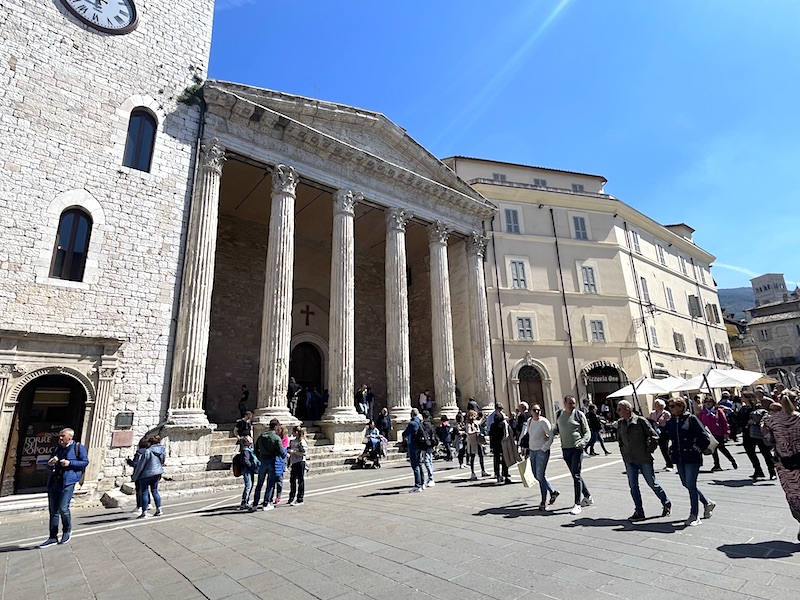
Temple of Minerva, Assisi
I marveled at the stories of all the pieces of ancient Rome that can be seen in St. Peter’s and other churches throughout Rome. The Basilica of St. Mary of the Angels and Martyrs was formed from a section of the Roman Bath of Diocletian. The church, Santa Maria Sopra Minerva, in Assisi was built in an ancient Roman temple dedicated to Minerva. Researching and looking for unique structures that incorporate layers of history throughout Italy can make an ordinary walking tour an extraordinary experience.
Venice
This was my third trip to Venice. I never tire of Venice and have always found new sites to explore and experience on every journey. Even after three visits, I still have a long list of attractions I want to see. Even though we visited during the third week of April, Venice was very crowded. In addition to the regular tourists, we also encountered multitudes of Italian students on class field trips along with graduation ceremonies in St. Mark’s Square. It was difficult to find relief from the crowds.
The majority of visitors left after the attractions closed in the late afternoon, so we took advantage of the shorter lines to take the elevator to the top of St Mark’s Campanile, the bell tower of St Mark’s Basilica in Venice. It was enjoyable seeing Venice from above as the city was winding down from the influx of day tourists. When possible, we found it advantageous to circle back to famous attractions after many tourists had departed for the day. Most tours follow similar schedules. If you can work around that schedule, you may find attractions less crowded and more enjoyable.
Since my first visit to the “City of Canals”, I have always felt that it is essential to spend 2 to 3 nights in a Venetian hotel to enjoy the attractions during the day and to experience the city at night. After the crowds leave for the day, Venice becomes a much calmer and more peaceful city. The dim lights and irregular streets make it feel like every turn is the beginning of a new adventure. A map helps, but it is easy to get lost even with printed help.
Many shops close between 6 and 8 pm, but most restaurants will stay open much later. This is the time to find a small trattoria or a special ristorante to enjoy a slow-paced relaxing dinner. Venice can also be a starting place to see islands such as Lido and Murano. These in turn can be daylong excursions that offer different opportunities. One of my favorite activities was bike riding on Lido Island along the sea walk. In the past, I have avoided Murano, but on this trip, we opted to visit a glass factory and found it much more rewarding than we expected.
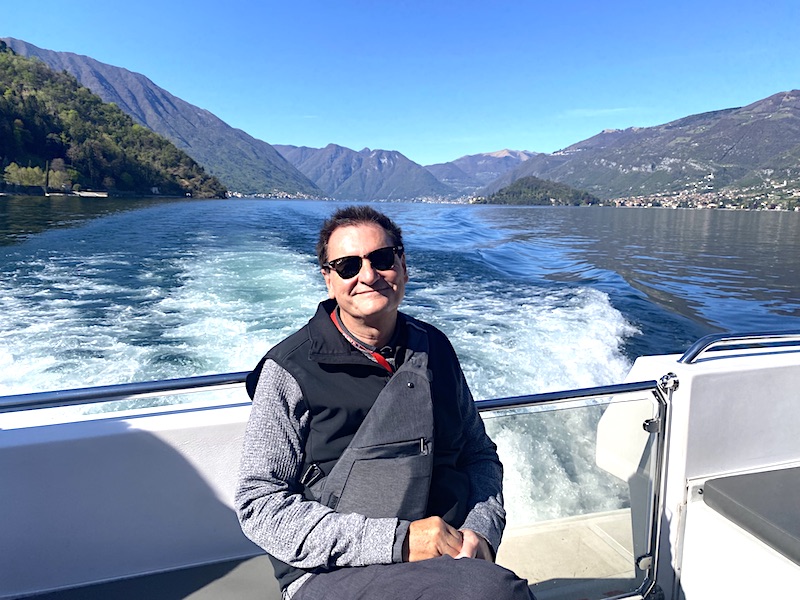
Lake Como.
Viewing Famous Sites From the Water
When I think back on my latest visit to Italy, the experiences I remember the most were those that involved traveling by boat. My trip to Italy began with sitting in the sun at the back of a boat on Lake Como and ended with a short ferry ride between cities along the Amalfi coast. Both experiences provided amazing opportunities to take photographs and see sites from a distance. Equally exciting was taking a boat ride around Venice that passed St. Mark’s Square and the Arsenal. This transport ride from our hotel to the island or Murano provided excellent opportunities to take photographs of famous Venetian sites that did not include masses of tourists.
My most memorable boat ride was around the isle of Capri, which included backing into some grottos and a dramatic dash through the arches of Faraglioni. Somehow being on the water and away from the crowds made seeing Italy even more magical.
In Venice, I took my first gondola ride through some of the canals. We booked ahead of time with a small group to take advantage of better rates and to avoid the anxiety that comes with negotiating prices and tips. We also had an opera singer and accordion player who provided music during our ride. It was corny and stereotypical, but it was also a lot of fun and memorable. Having crowds watch us as we glided under bridges and encouraging our gondoliers as they raced each other down the Grand Canal added to the festivity. This was something I had avoided, but I was glad that I did it in such a memorable way.
Pizza, Pizza
When I think of Italian food the first images that pop into my mind are pizza and pasta. Unsurprisingly, I found that almost every restaurant in the tourist areas of Italy contains menus that focus mainly on these two items. On my first visit to Italy, I followed the age-old advice, “Never eat in a ristorante, always eat in a trattoria.” Many of my meals were memorable.
Following this same advice was not as easy this time. I suspect that over the years the incredible numbers of tourists have created an unending demand for stereotypical Italian foods. It was difficult on my current visit to even find a family-run trattoria that had local-sourced Italian dishes. Often we had to research and seek out information from guides to get away from the main areas of the city to find smaller, more intimate places to eat.
I love all kinds of pizza. Growing up near New York City, there were always many different pizza types: thin crust, thick crust, Neapolitan, New York-Style, deep dish, and square-shaped. I enjoyed seeing the change in pizza styles from northern Italy to Naples. We made it a challenge to compare and contrast the different types of pizza we found in each city. We didn’t eat pizza in every city, but often pizza became an easy lunch option. Over our two weeks in Italy, we looked forward to trying pizzas in new cities to compare the texture of the dough, the consistency of the sauce, the mixture of cheeses, and other available options.
All of us ended up with different favorites. My favorite was at a restaurant in the Piazza Navona in Rome – the most touristy of tourist spots. The paper-thin crust pizza at the restaurant 4 Fuimi was exactly like the restaurant, Marta, which I frequently visit in New York City. The only difference I could find was that the pizza in New York City cost twice as much as Rome and was much smaller. The Tartufo, a dark chocolate gelato dessert, at 4 Fuimi was also a treat that I fondly remembered from my prior visit.
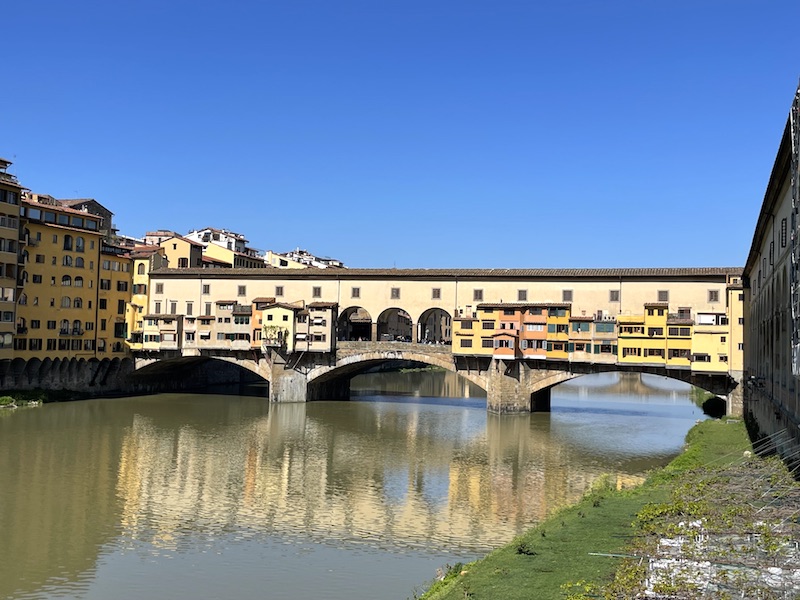
Florence
Endless Photo Opportunities
Italy presents un-ending photo opportunities. Finding vantage points and working with the sun was challenging, but I still managed to take hundreds of photographs. Classic photos of places such as the Leaning Tower of Pisa and Michelangelo’s David have become difficult to capture due to the vast number of tourists taking Instagrammable photos. I found it comical to take photographs of the people and their peculiar poses with the attractions in the background. Often when I found an opportunity to take a scenic attraction, the moment was ruined by a mass of people filling in every available open space.
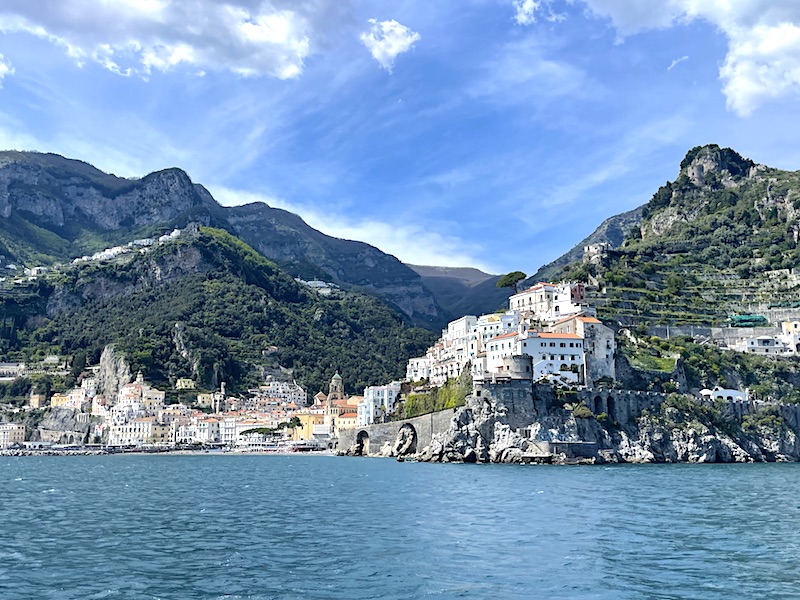
Amalfi Coast
Taking photographs from boats proved to be a great way to capture scenic images of cities. I took advantage of these opportunities in Como, Venice, Naples, Capri, and Amalfi. I also looked for locations that had some altitude such as the Campanile in St. Mark’s Square, The Piazza de Michelangelo in Florence, the walls of Assisi, Mount Soleno in Capri, and the cliffs of the Amalfi coast.
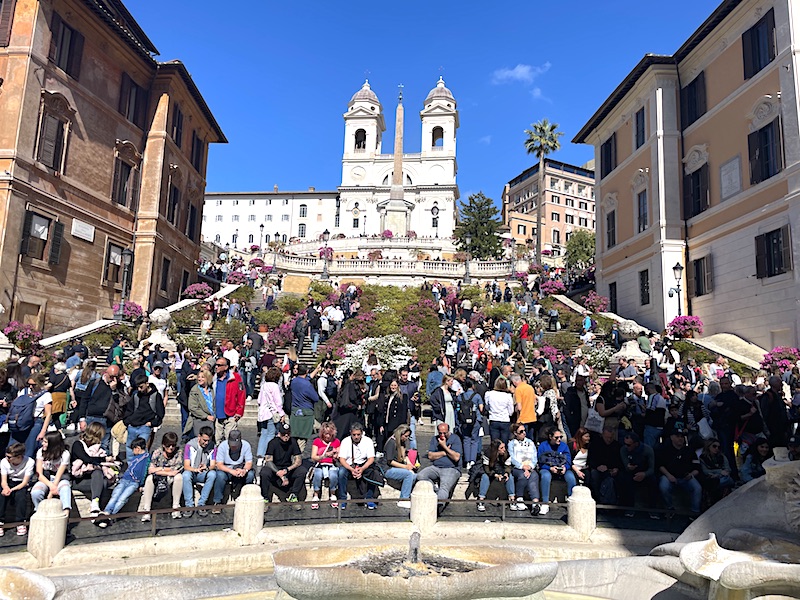
Spanish Steps in Rome
Bridges provided opportunities in Verona, Venice, Florence, and Rome. Since I visited in spring, there were colorful gardens such as the Belvedere in Bellagio, The Papal Gardens of Castel Gandolfo, villa courtyards in Pompeii, and the Augusta Gardens in Capri. Sometimes, at sites such as Trevi Fountain, the Spanish Steps, Michelangelo’s David, the Coliseum, St. Peter’s Basilica, and the Vatican Museum, I just had to accept the fact that there would be many people in the background.
Try Something Different
On our recent visit to Italy, we decided to try some experiences that we had avoided in other areas of the world. In general, we drink very little alcohol, so a visit to a vineyard is usually not high on the list of experiences we seek out. This time, we had two visits that included wine tasting and meals in small local agritourism businesses in Tuscany. Both the Fattoria il Poggio in Montecarlo and Ristorante I Tre Pini in Impruneta became highlights of our trip. These small family-run businesses featured other products in addition to wine such as olive oils and balsamic vinegars. It was a delight to eat meals that included homemade bread, local charcuterie products, freshly made pasta, grilled meats, and fresh vegetables. Singers and musicians who provided a local atmosphere to the experience further enhanced each of these meals.

Florence
After eating Italian food for many days, my wife, who is native Chinese, was hungry for Chinese food. When we travel, we often look for a Chinese community in the cities we visit. Here my wife gets to speak Mandarin with local people and more importantly gets to find out if there are any authentic Chinese restaurants. She hit the jackpot in Florence and Rome where our party was able to dine on some very tasty and spicy Sichuan cuisine. This turned an ordinary night into an exceptional food experience that allowed us to meet local people who had immigrated to Italy and started new businesses in their newly adopted countries. They were very open to talk about their lives and share their experiences in Italy. My wife also raved that the food was very close to the tastes she has experienced in China.
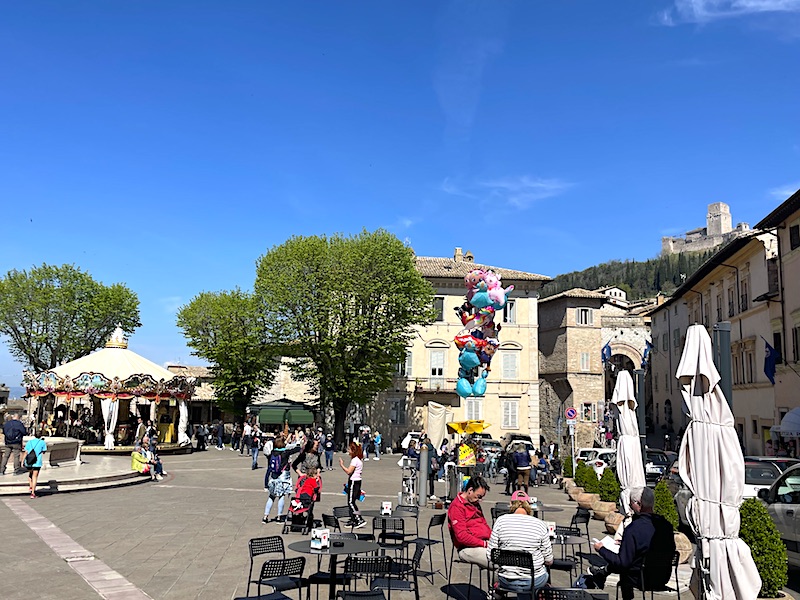
Assisi
On our visit to Assisi, we entered from a gate that was further removed from the tourist area than the last time I visited. The city was crowded, but our walk from a higher elevation down to the basilica provided us with the opportunity to see a local outdoor market and experience less crowded areas on a day when the famous sites were mobbed. This different approach to the city was more relaxing and meaningful since we were able to see the actual residents of Assisi along with the famous tourist sites.
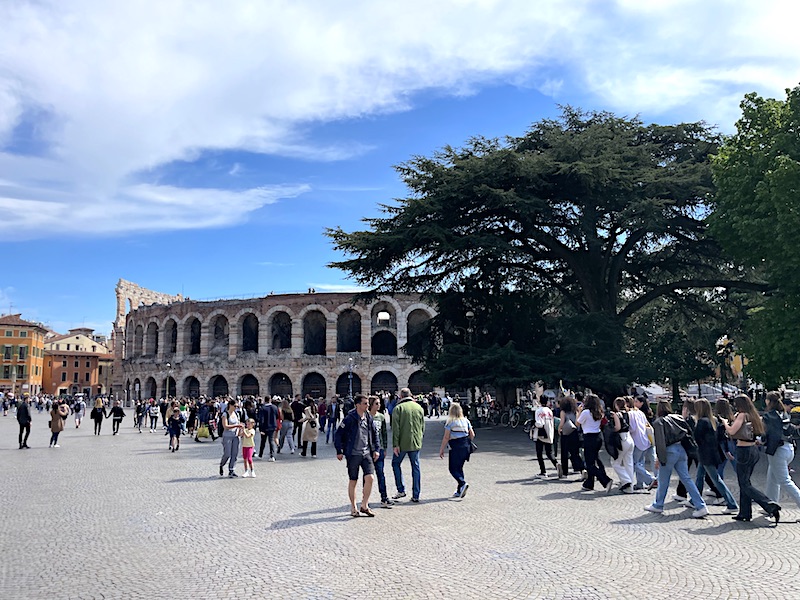
Verona
Sometimes trying something different does not always meet expectations. We stopped in Verona on our way from Como to Venice. I was excited about this stop because I had not been there before and had heard about many interesting attractions to visit. Unfortunately, the city was overcrowded with tourists and school groups on the day we visited. We did not plan well and did not do enough research to make the best use of the limited time we had there. The few sites we saw were enjoyable, but we mostly remember jostling through crowds of people.
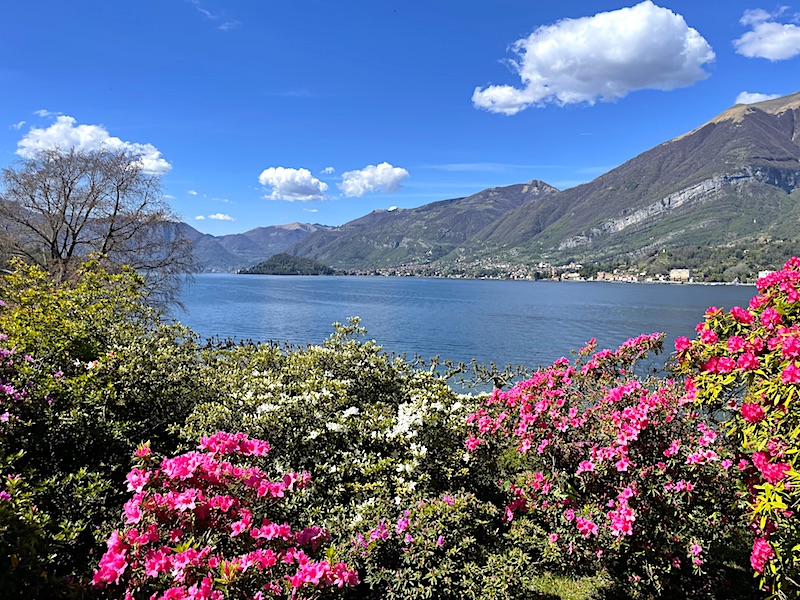
Lake Como
New Surprises
Selectively seeking out new places I had not seen before proved to be a very rewarding experience. Our trip started in Lake Como where we stayed in the convenient Hotel Barchetta Excelsior overlooking the southern end of the lake. We arrived at the delightful sounds of a local band playing in the Piazza Cavour right outside our room. The highlight of our visit to Como was a spectacular morning boat tour of the lake that included a stop at the city of Bellagio. We walked through the streets of the terraced village but spent most of our time enjoying the gardens and views from the I Giardini di Villa Melzi. The gardens and buildings were created between 1808 and 1810 for Francesco Melzi d’Eril, the Duke of Lodi, who was Vice-president of Napoleon’s Italian Republic and, later, Grand Chancellor of the Kingdom of Italy. Many flowers were in full bloom and our journey through the lake-side landscaped pathways was peaceful and scenic. Our day ended in the town of Como, where we were able to find a neighborhood restaurant called Il Grilo that served local Italian cuisine.
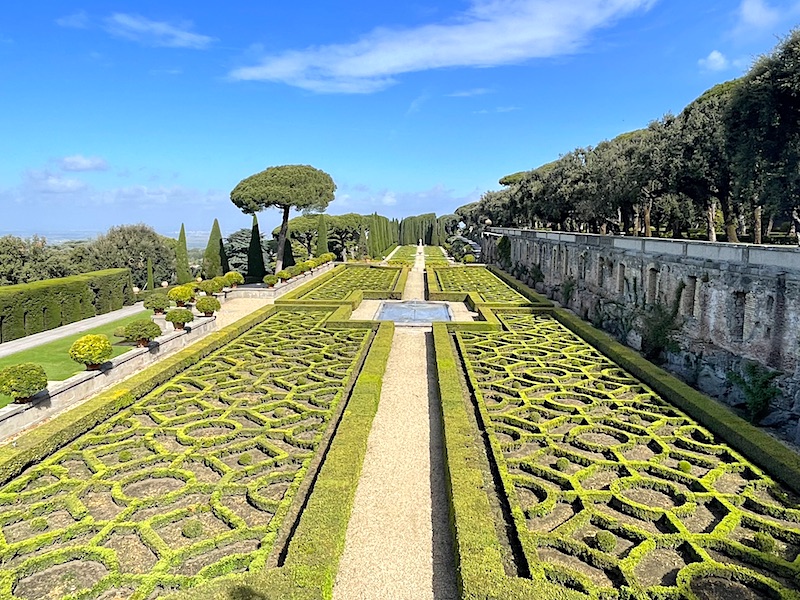
Castel Gandolfo
Southeast of Rome we stopped at the village of Castel Gandolfo to view the Giardini di Villa Barberini at the Apostolic Palace of Castel Gandolfo. The palace grounds are unique in that they are not under Italian jurisdiction, but have a special status as one of the possessions of the Vatican. After Pope Francis gave up his papal residency in 2015, the Apostolic Castle was opened to the general public for privately escorted tours. Our Monday morning visit was escorted by a papal guard who lead us on a lengthy walk from the entrance to the gardens. Normally tours are in Italian, but our guide did speak some English. We spent an enjoyable two hours walking around the grounds and enjoying the beautifully manicured gardens, which were on the site of the residence of the former Roman Emperor Domitian. The hilltop location and fresh air of the countryside made for a delightful stop on our way to Naples.
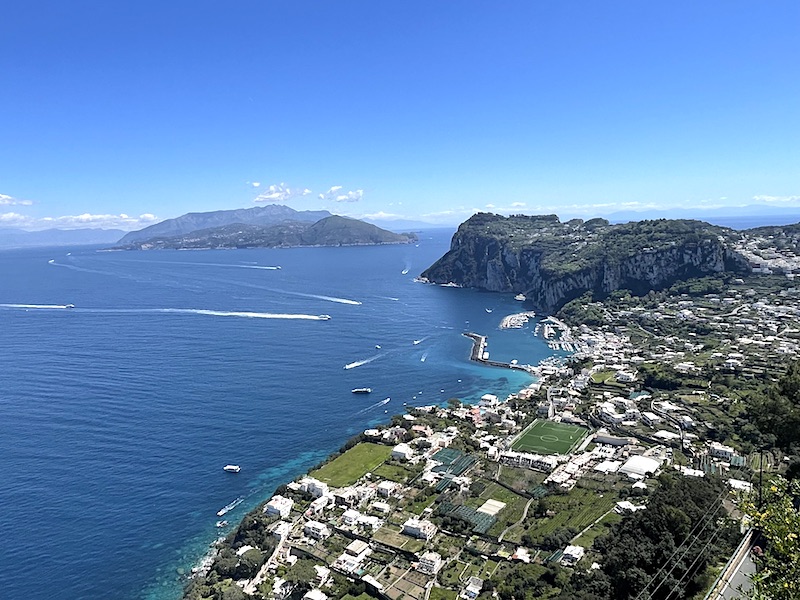
Capri
One of our final days in Italy was spent visiting the island of Capri located in the Tyrrhenian Sea off the end of the Sorrento Peninsula. After breakfast, we took an early hour-long ferryboat ride to reach the island before the heavy influx of tourists. We spent a full day enjoying the scenery from the very top of Anacapri to the grottos that perforate the coast around the island. We were fortunate to visit on a sunny, cool spring day when much of the island was in bloom with an abundance of flowers. It was our favorite experience in Italy and a day we will not forget.
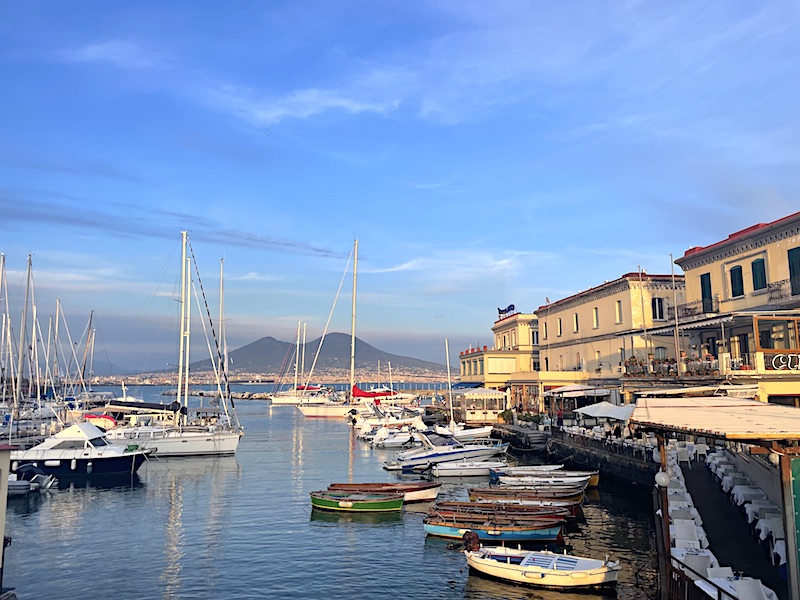
Bay of Naples
On our journey, we were transported by ferryboat, minibus, chairlift, funicular, and motorboat. We started in the Marina Grande and made our way up to the town of Anacapri where we took a chairlift to the highest point on the island, Monte Solaro. After taking in the 360-degree views, we made our way back to the Piazza Vittoria for some shopping, lunch, and views of the Bay of Naples. From here we descended to the Piazzetta and walked to take in the beautiful coastal views of the Belvedere of Tragara.
After descending back to the Marina Grande by funicular, we then boarded a motorboat to view Capri by sea. Seeing the island by water provided even more opportunities to view the beauty of the limestone crags and pillars called sea stacks. We speedily navigated through the arches of Faraglioni and maneuvered around the Punta Carena Lighthouse. Since it was high tide, a visit to the Blue Grotto was not possible, but we did back into a good number of other colorful grottos. Overall, this was a magical day that will forever create a long-lasting image of Italy.
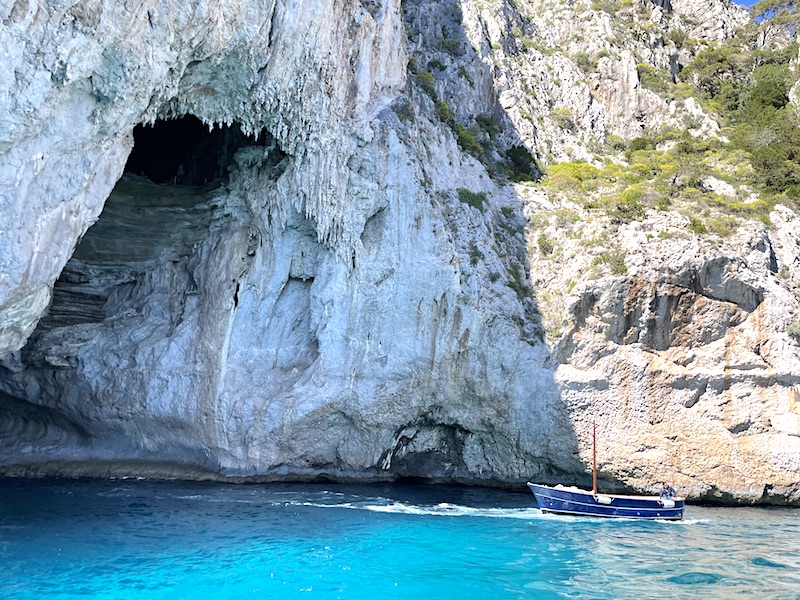
Capri
In Rome, I continued to add to my list of new experiences. I thoroughly enjoyed visiting the church of St. Peter in Chains in Rome to view Michelangelo’s statue of Moses. The church does not receive nearly as many people as the Vatican and provides an excellent opportunity to see a major work by Michelangelo. Even though I have visited the major fountains, the Parthenon, and the piazzas of Rome before, this time I found it more interesting to use a local guide who provided detailed background information and stories.
A new find I experienced on my recent visit was The Basilica di San Clemente al Laterano church in Rome. In this one location, you can experience three layers of history. The present medieval basilica was built around the year 1100 AD. Buried below it is a fourth-century church that had been converted into the home of a Roman nobleman. Beneath the fourth-century church were a Roman home, storage complex, and alleyway from the first century. Each of these structures can be experienced as you walk down through layers of history built on top of each other.
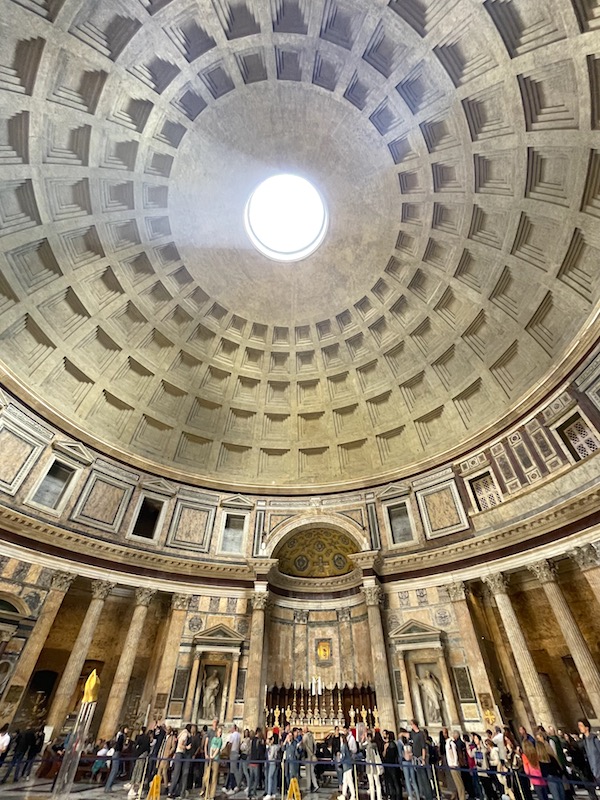
Pantheon in Rome
Your Visit To Italy
The demand for tourism in Italy as well as throughout Europe is currently very high and will likely remain strong for a long time. Since the economy of Italy is very dependent on foreign visitors, they do have a strong tourism infrastructure, but even this is being pushed to its limits. Don’t let the large crowds keep you away. It is unlikely you will find a low tourist season unless you travel during winter when the weather is often rainy and cloudy (even though we were told by locals there have been fewer rains and clouds in the past few years). Spring is a wonderful time to visit, but you will run into Easter holiday travel and school groups who also use this time for their annual field trips. Summer brings large numbers of international travelers and fall has become the second busiest travel season.
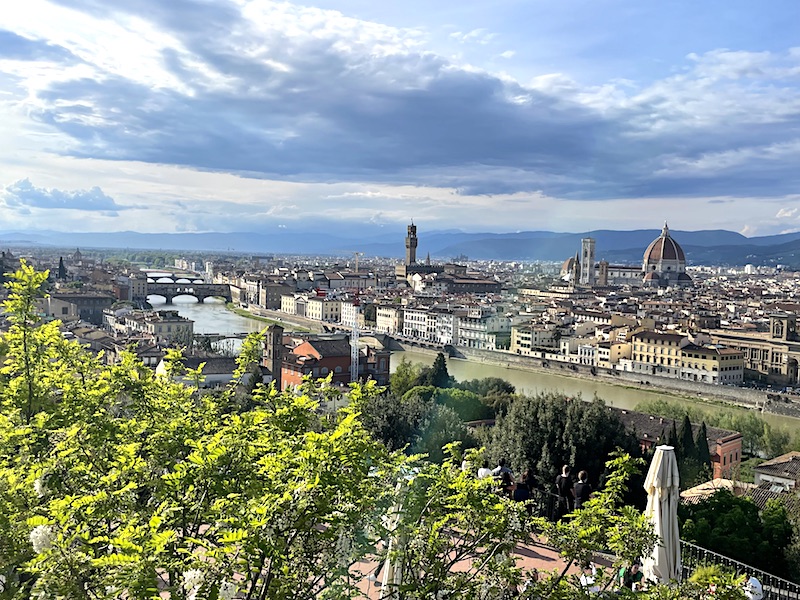
Florence
Crowds are inevitable, but a rewarding visit can be achieved through careful planning, pre-booking, and research. Take time to find things that are meaningful to you and be open to new possibilities and discoveries. Touristy experiences become meaningful when they become your experiences and provide your own unique memories. I definitely added to my memories of Italy on my return visit and am looking forward to creating even more in the future.
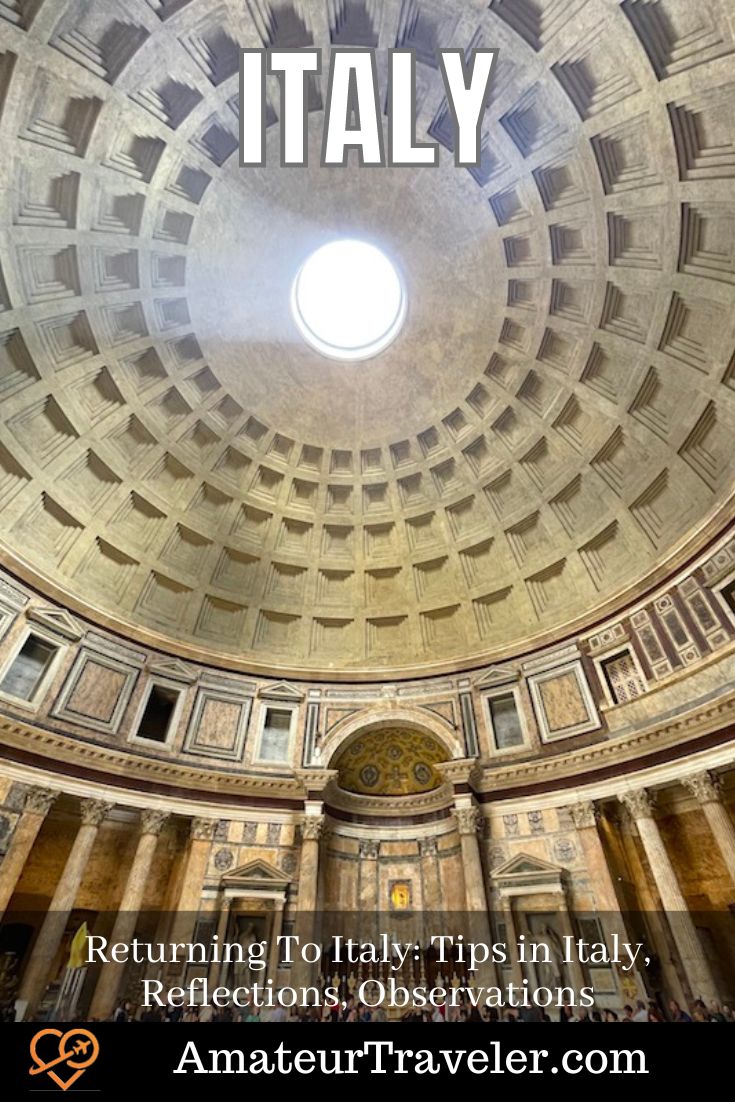
- Search for Great Tours HERE
- Get a Car Rental
- Get a universal plug adapter
- Get an eSim to be able to use your smartphone abroad.
- Book Your Accommodation HERE
- Buy Travel Insurance
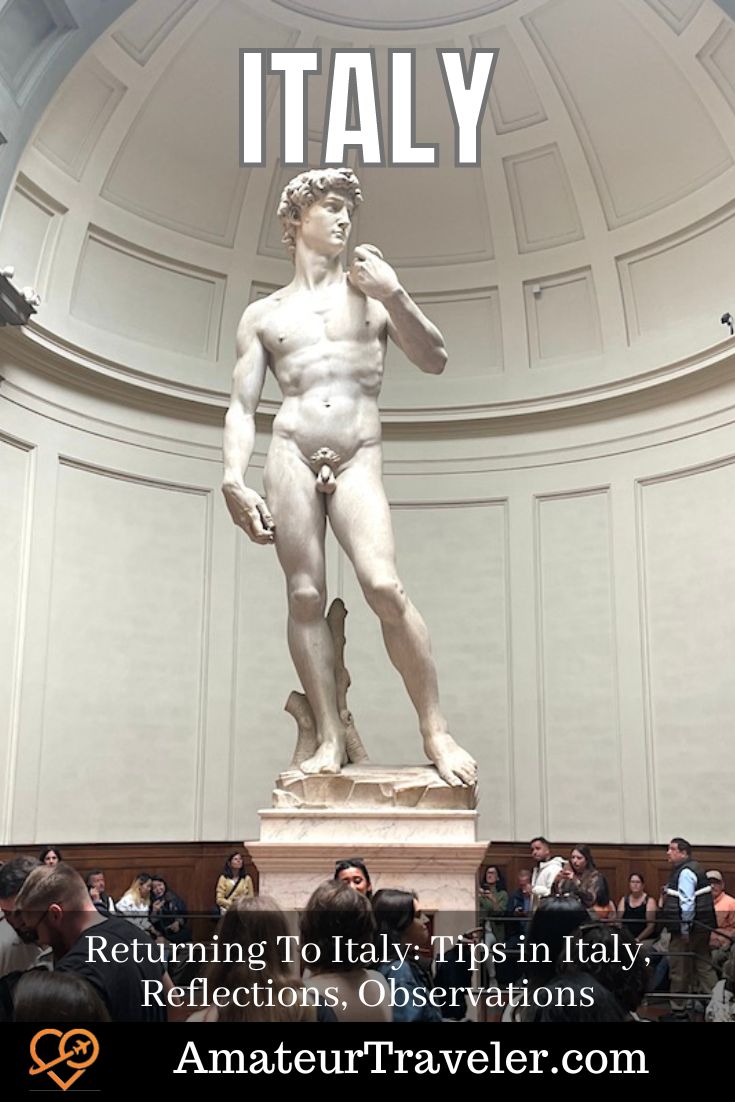
Leave a Reply
Tags: article, assisi, florence, italy, lake como, pisa, rome, venice

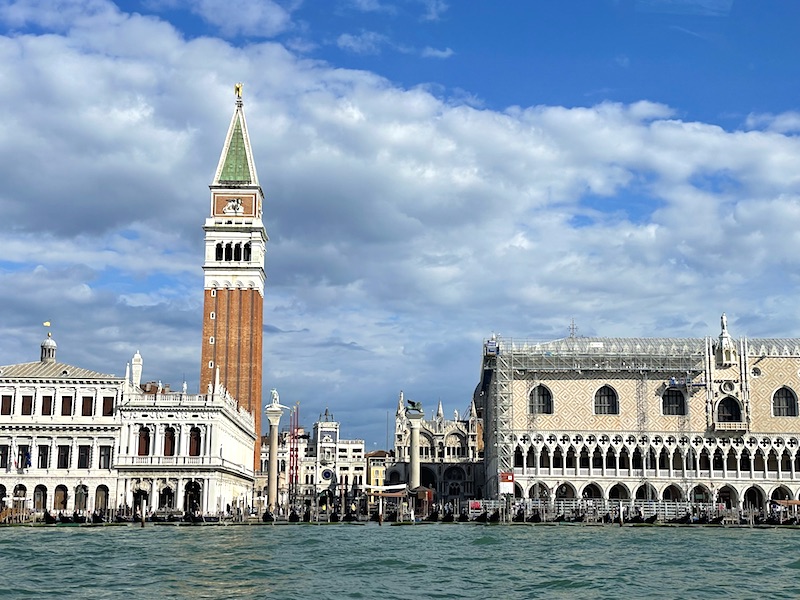
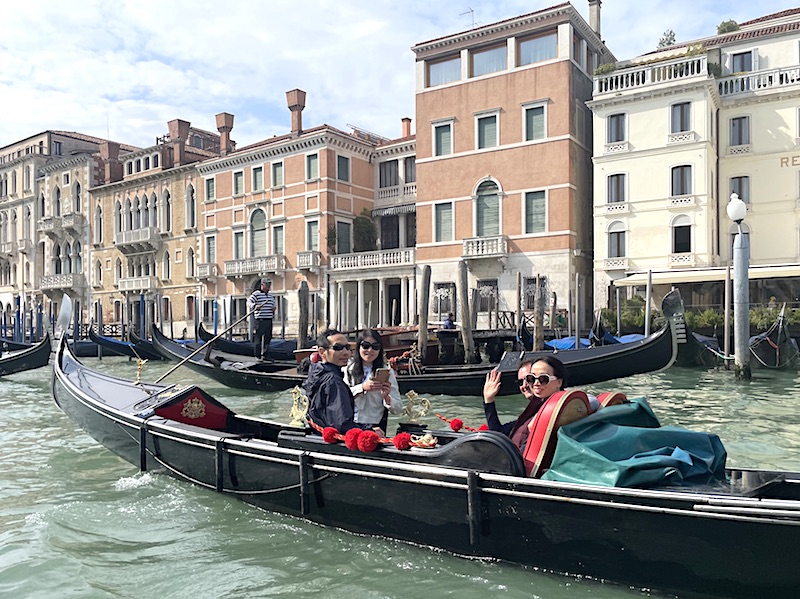
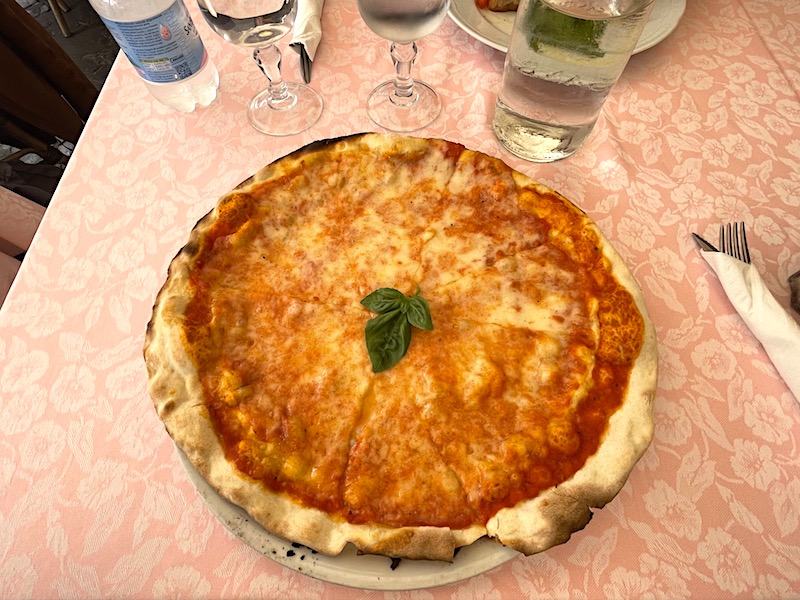
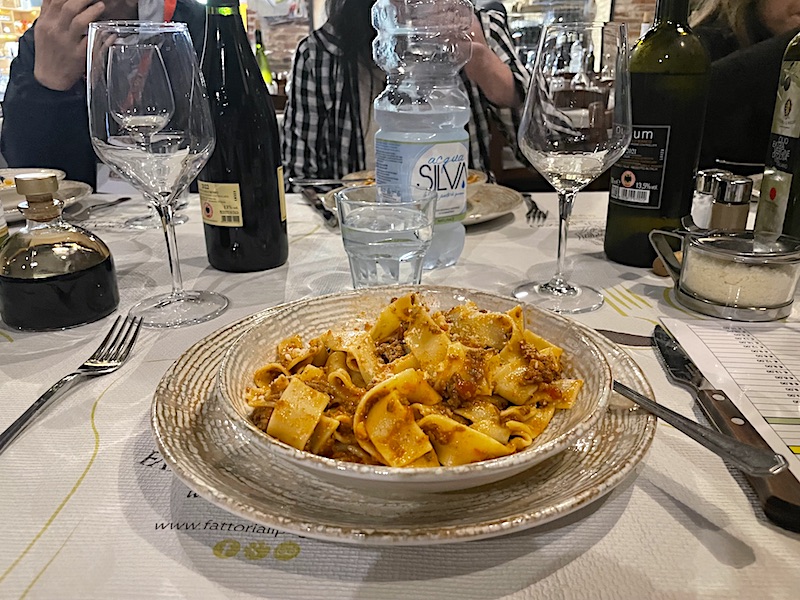
 7 Places to Kiss in Italy
7 Places to Kiss in Italy Day Trips from Florence, Italy – Episode 242
Day Trips from Florence, Italy – Episode 242 Travel to Como, Italy – Video Episode 35
Travel to Como, Italy – Video Episode 35 Travel to Rome, Italy – Episode 29
Travel to Rome, Italy – Episode 29
